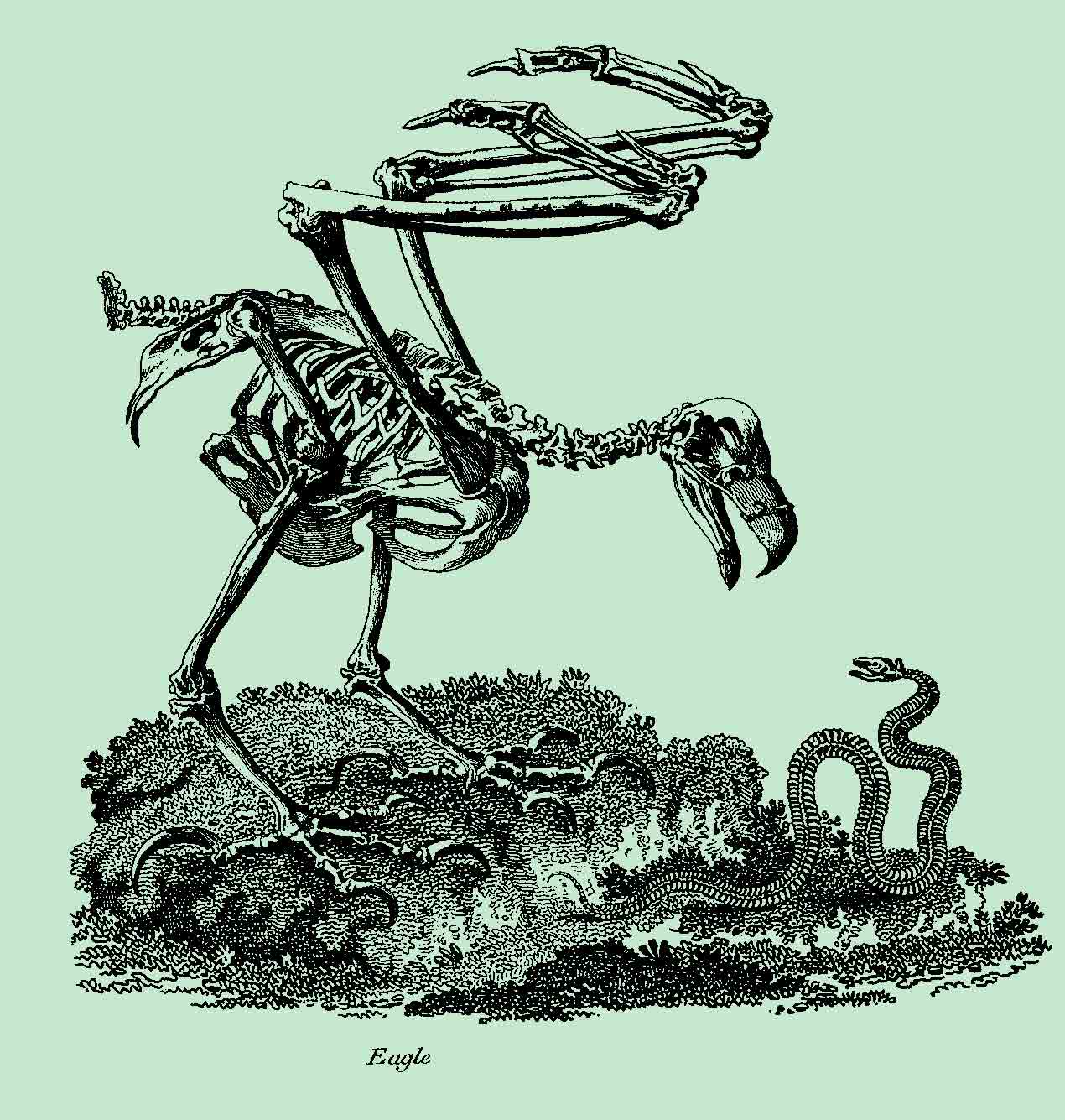Why is a bird skeleton special?
Bird skeletons are fascinating; they need to be lightweight to fly but strong enough to withstand the stresses of flight. To achieve this, birds have hollow bones, and the bones themselves are structurally very dense, stiff and strong. Instead of heavy teeth and jaws, bird beaks are lightweight but still powerful. The shape of a bird's beak has evolved to complement its environment and diet. For example, a bird of prey will have a hooked beak for tearing flesh, whereas birds who feed on nectar will have a long, thin beak to reach into small, narrow flowers.

The skeletons of an eagle, swan, ostrich and a crane.
Engraving by Lodge after Brown.
Which bird has the largest wingspan?
The wandering albatross has the largest wingspan of any living bird. The longest-winged verified example was approximately 3.7 m or 12 ft 2 inches. Their immense wingspan is essential for their long flights. A wandering albatross can fly 15,000 km in a single journey and between 800-900 km in one day.

Wandering Albatross by George Shaw (1751-1813)
How powerful is a bird's bite?
Scientists at the University of Reading and the University of Lincoln discovered that Galapagos large ground finch has an incredibly powerful bite in relation to its body size. Despite weighing only 33 grammes, it has 70N of bite force - roughly 320 times more powerful, pound-for-pound, than a T. rex.

Large Ground-finch (Geospiza magnirostris), one of Darwin's finches. Charles and Chatham Islands, Galapagos Archipelago by John Gould
(14.Sep.1804 - 3.Feb.1881)
Interested in learning more?
This pictorial archive features snakes, birds of prey, kangaroos, lions, mastodons, rabbits, walruses, bats, lizards, horses, giraffes, rhinoceros, deer, camels, whales and so much more.
Image Download Included:
We have carefully restored the artwork and provided a download link within the publication where you will locate high-resolution files in JPEG format to speed up your workflow.
No scanning necessary! Follow the instructions found within the book and gain instant access to all images featured.

|




